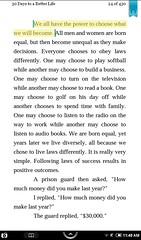Not only does digital fluidity facilitate the creation of printed media that have no right to exist physically (that should stay digital and not “waste” paper—the using up of these resources clearly pushes our buttons because of both concern over conservation and over cultural capital—that gets to be a book?), expanding (or shrinking, depending upon your perspective) authorship, it also raises questions of access—how do we ensure these texts remain available as platforms change? As Michael Simeone notes, digital books are far more brittle than their physical counterparts and decay in a far different fashion. Sally Ball has addressed the way this ephemerality impacts conceptions of authorship—knowing that our works are likely to become dated within a short span of time prevents many writers from experimenting with new media and alternative or app-based publishing forms (many poets won’t even reference the contemporary moment in their work, lest a temporal reference prevent its resonance for subsequent generations). I myself collaborated on a book of augmented reality poems whose content can change at the drop of a hat—since the text does not appear on the pages, but only comes to life when those pages are presented to a webcam, emerging from barcode-like markers on the page’s surface (in fact, the reader herself can now change what appears on-screen, thanks to a web-based tool my collaborator Brad Bouse developed). That very terror, though, of dating oneself, can alternately be seen as liberatory—if we fail, we can erase the evidence, and we can even adapt or update our work to meet a new audience. If Michael Simeone’s doomsday predictions are accurate, then what me worry? about whether my book is accessible a year or two from now? Poets are always accused of fiddling while Rome burns, so to worry about who’s listening only expands our image of writerly narcissism.
To be serious, though, this state serves as a reminder that a book is an event, a performance between reader and page. Artists have known far longer than writers that the best way to save the ephemeral (happenings, performance, some land art) is through documentation.

Art in the Age of Mechanical Reproduction, a Philadelphia purveyor of fascinating goods and spirits.
Though I may be willing to give up on work that can no longer be supported, scholars like Lori Emerson, Dene Grigar, and Stuart Moulthrop are doing wonderful work to build archives of new media writing (from magic lantern slides—which once upon a time, of course, told highly immersive phantasmagoric stories—to hypercard works and Flash-based texts). In addition to this scholarly interest, what about the resurgence in pop culture of “antiquated,” outdated, even obsolete aesthetics? It’s no coincidence that I picked up letterpress printing in graduate school while studying electronic literature, or that my students are fascinated when I bring a typewriter into the classroom, or that we are so inundated by nostalgic-looking image filters that we need a #nofilter hashtag to assure us what we are seeing accurately reflects “reality.” Perhaps the electronic literature projects being made today, even those that seem glossy, interactive, and lovely in the best ways (like Aaron Koblin’s interactive music videos, and mass collaborative artworks created for Google) will indeed look wonky and wiley and willful to future readers (perhaps they may be utterly inaccessible), but it is also possible that, like the resurgence of interest in glitch and animated GIFs, their very stylistic issues will make us treasure them more.
























